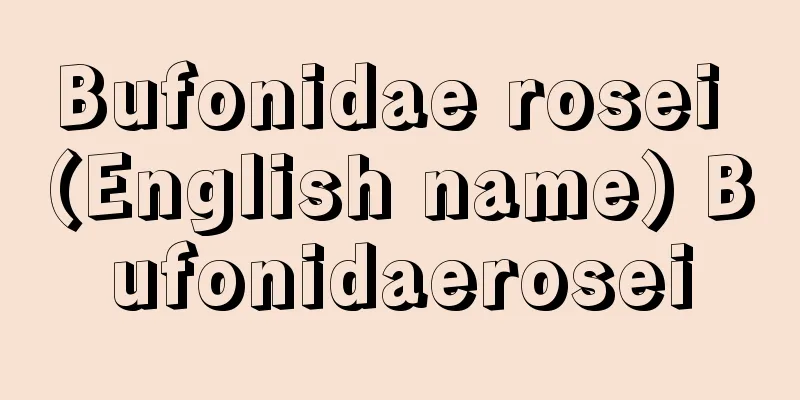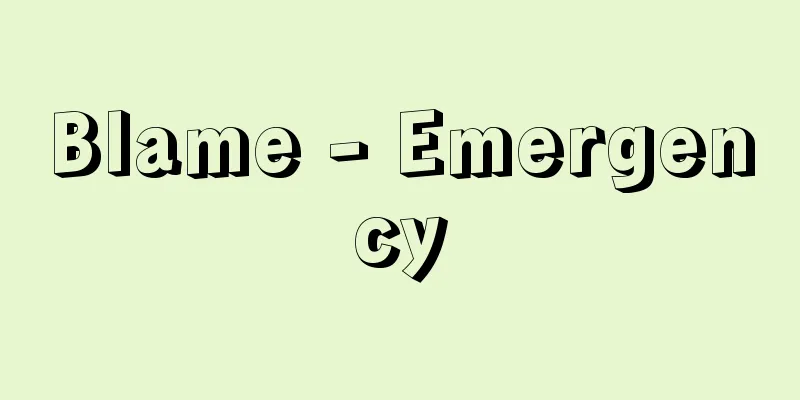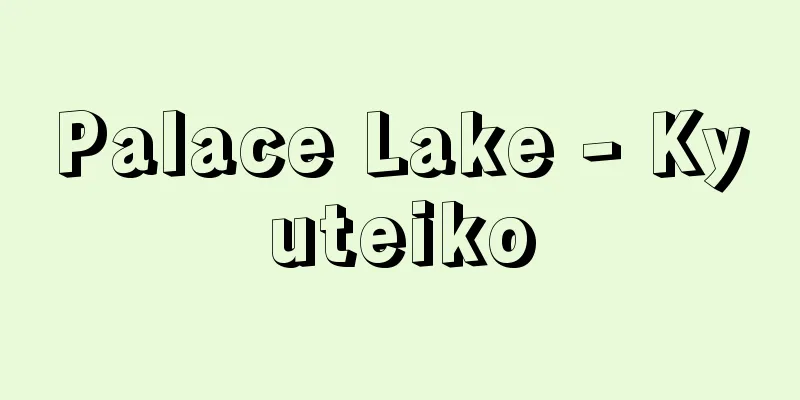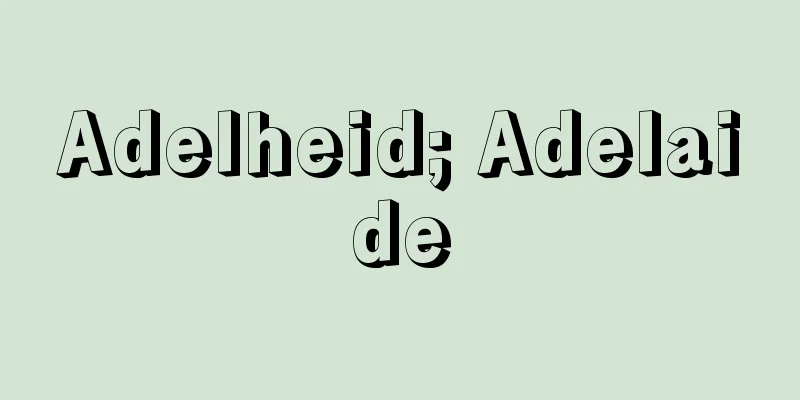Etruscan Art - Etruscan Art
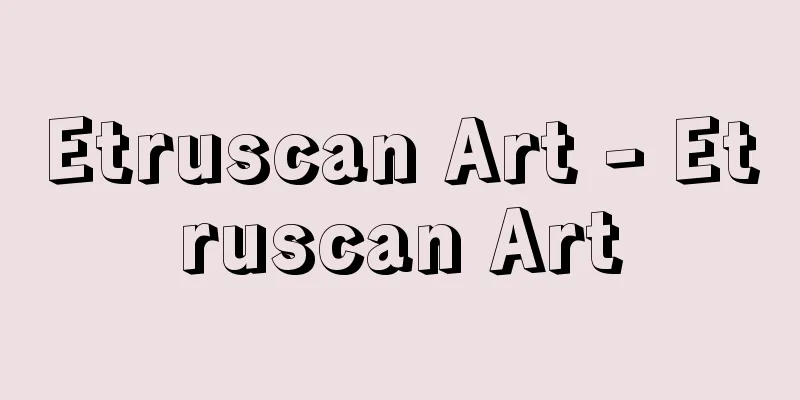
|
Etruscan art developed in Etruria, central Italy, from the 8th century BC to the 1st century BC. The Etruscans played the most important role in politics, economy, and culture among the peoples of the Italian peninsula before Roman rule, but they also demonstrated excellent abilities in art, making important contributions to the plastic arts culture of Rome and by extension Western Europe. Their origins are still unknown today, but it is thought that they inherited the indigenous Villanova culture and further incorporated the advanced cultures of the East and Greece to form a unique civilization. Etruscan art cannot be discussed without mentioning the influence of Greece in particular. Therefore, when considering its history and evaluation, its relationship with Greek art is the most important issue. In the 18th century, when Etruscan art as a whole began to be evaluated, its originality was emphasized, and it was even considered to be earlier than Greek art. However, in the 19th century, it was evaluated negatively, and excellent works were considered to be made by Greeks or faithful copies, and were considered to be part of Greek art. It was only in the 20th century that the dynamic and expressive nature of Etruscan art, which was different from Greek art, was finally recognized and appreciated. This was aided by the discovery of masterpieces such as the Apollo of Beio, excavated in 1916 at Veii, and by changes in modern aesthetic values. Today, it is widely recognized that Etruscan art is different from Greek art, which is centered on the ideal representation of the human body, in that it is gorgeous, full of life and reality, and exudes a mystical atmosphere. This can be said to be a reflection of the temperament of the Etruscans, especially their religion. Due to the relationship with Greek art and exchanges with other ancient Italian peoples, the rise and fall of the Etruscans, and the strong independence of each city-state, Etruscan art lacked unity and it is impossible to grasp its development as a continuous whole. Therefore, it is usually divided into four periods according to its relationship with Greek art: (1) Orientalized Style (8th century BCE to mid-6th century BCE), (2) Archaic (mid-6th century BCE to mid-5th century BCE), (3) Classical (mid-5th century BCE to late 4th century BCE), and (4) Hellenistic (late 4th century BCE to mid-1st century BCE). Of these, Etruscan art flourished most during the Archaic period, which coincided with its political and economic prosperity. The term "Etruscan style" (signa tuscanica) used by the ancient Romans is thought to have referred to art of the Archaic period. The next Classical period is sometimes called the Intermediate period because its nature is unclear. Greek classical art did not take root due to the political decline of the Etruscans and its incompatibility with their temperament. In contrast, Etruscan art saw a revival during the Hellenistic period, because the realism and pathos of the Hellenistic style resonated with the Etruscans' sense of form. Many Etruscan works of art are crafts for everyday use, and because they are characterized by their artisanal nature, the names of the artists are not known, with the only exception being the sculptor Vulca, who is said to have created the "Apollo of Beio." Another characteristic of Etruscan art is the large proportion of tomb art, which is thought to be due to their view of the afterlife, in which the dead continued to live where their bodies were placed. [Masumi Ishinabe] ArchitectureThe Etruscans excelled in civil engineering and architecture, and were highly regarded for their influence on the Romans. They also taught the Romans how to build cities. A representative example of Etruscan city construction is Marzabotto (ancient name Misano) near Bologna, where a well-ordered urban plan can be seen. On the other hand, only fragmentary remains of Etruscan architecture remain today. Representative examples are castle gates such as the Porta Marzia in Perugia, the Porta Diana in Volterra, and the Arch Gate. The abutment structure (arch structure) seen in these is thought to have been brought from the East, and the contribution of the Etruscans to arch structures, which was once emphasized, has become unclear over time. In contrast, the main focus of lost Etruscan architecture was temples, and they are thought to have been numerous. Unlike Greek temples, they did not have colonnades on the back, and frontality was emphasized, and they were built on bases. These characteristics were inherited by Roman temple architecture. Furthermore, the use of terracotta decorations on wooden structures, a technique that had been abandoned in Greece long ago, was retained in Etruscan temples. However, the most distinctive feature of Etruscan architecture is the tombs. These tombs, which consist of tomb chambers carved into rocks to resemble houses, or circular or square chambers made of piled cut stone and covered with pseudo-arches or pseudo-cupolas, are important in terms of architectural technique and as clues to understanding architecture above ground that has been lost. [Masumi Ishinabe] SculptureThe Etruscans used local stones such as tuff, sandstone, and alabaster for their sculptures, and rarely used marble, which the Greeks considered the best material. However, Etruscan sculpture excelled in terracotta and bronze rather than in these stones. The greatest masterpieces of Etruscan sculpture, such as the "Apollo of Baio" and the "Couple Sarcophagus" that decorated the roofs of temples, as well as the "Capitoline Wolf," "Chimera," and "Aringatore (Orator)," are all made of terracotta or bronze. As can be seen in these works, Etruscan sculpture, compared to Greek sculpture, is characterized by free and dynamic expression, figures with little attention to proportions and emphasis on the head, animals with a sense of wild vitality, and a deep interest in realism, especially portraits. It is also worth noting that tomb art played an important role in sculpture, that the Archaic period produced many highly artistic masterpieces filled with the Etruscan spirit, and that the Romans inherited the tradition of excellent portraiture from the Hellenistic period, such as the "Statue of Brutus." [Masumi Ishinabe] PaintingThe Etruscans loved painting and decoration, and it seems that they used it widely to decorate buildings, but today only the murals in the tombs remain. They were usually painted in fresco on stone walls with a base. The Tarquinian murals are outstanding in both quality and quantity, but they have also been found in Chiusi, Baio, Cerveteri, Orvieto, and other places, and they date from the 7th to the 2nd century BC. However, the best paintings from Tarquinia, such as the Tomb of the Bird Diviner, the Tomb of the Hunt and Fishing, and the Tomb of the Lioness, are from the Archaic period. These murals vividly depict banquets, games, and scenes from daily life, and mythological themes are rare. Compared to the clear and free-flowing expression of the Archaic period, the Hellenistic works have a strong mystical tone and include gods of the underworld and demons, reflecting a change in the view of the afterlife. In addition to their value in themselves, these Etruscan murals are also of great importance as they provide insight into Greek painting, which has since been lost. [Masumi Ishinabe] CraftsThe Etruscans excelled in crafts, and produced many excellent pieces of gold and silver work and bronze works. Jewelry has been excavated from tombs, and the golden clasps excavated from the tomb of Legorini Galassi in Cerveteri are particularly famous for their high level of craftsmanship. There are also many excellent bronze works, such as women's cosmetic tools called kistas, such as the Ficoroni Kista, jewelry cases, candlesticks, and mirrors. Bronze statuettes, which strongly appeal to modern aesthetic sensibilities, also convey the creativity of the Etruscans. In terms of pottery, the black pottery known as bucchero is famous. [Masumi Ishinabe] "Etruscan Art" by Fukumatsu Miwa (1968, Chuokoron-Bijutsu Shuppan) Source: Shogakukan Encyclopedia Nipponica About Encyclopedia Nipponica Information | Legend |
|
紀元前8世紀から前1世紀にかけて、イタリア中央部のエトルリアを中心に展開したエトルリア人の美術。エトルリア人は、ローマ支配以前のイタリア半島の諸民族のなかで政治、経済、文化の各面にわたりもっとも重要な役割を果たしたが、美術にも優れた能力を発揮し、ローマ、ひいては西ヨーロッパの造形美術文化に重要な貢献をした。彼らの起源は今日なお不明であるが、土着のビッラノーバ文化を継承し、さらに東方およびギリシアの高度な文化を取り入れ、独自の文明を形成したと考えられる。とくにギリシアからの影響を抜きにしては、エトルリアの美術は語れない。したがって、その歴史や評価を考えるうえで、ギリシア美術との関係はもっとも重要な問題である。エトルリア美術が全体として評価されるようになった18世紀にはその独創性が強調され、ギリシア美術よりも早い時代のものとさえ考えられた。しかし19世紀になると否定的に評価され、優れた作品はギリシア人の手になるか、その忠実なコピーだとみなされ、ギリシア美術の一部と考えられた。 20世紀に入って、ようやく、ギリシア美術とは異質な、ダイナミックで表現的なエトルリア美術固有の性格が判別され、評価されるようになった。1916年にベイオ(古名ウェイイ)から出土した『ベイオのアポロン像』のような傑作の発見や、近代の美意識の変化がそれを助けたといえる。 今日では、理想的人体表現を中心とするギリシア美術とは異なった、華麗であると同時に生命感と現実感にあふれ、また神秘的気分を漂わせたエトルリア美術の特質が広く認められている。それは、エトルリア人の気質、とりわけその宗教が反映したものといえよう。 こうしたギリシア美術との関係や他のイタリア古代民族との交流に加えて、エトルリア人の盛衰や各都市国家の強い独立性などのために、エトルリア美術は統一を欠き、その発展を連続的にとらえることは不可能である。そこで通常、ギリシア美術との対応による、次のような時代区分が行われている。(1)東方化様式期(前8世紀~前6世紀中葉)、(2)アルカイック期(前6世紀中葉~前5世紀中葉)、(3)クラシック期(前5世紀中葉~前4世紀末)、(4)ヘレニズム期(前4世紀末~前1世紀中葉)の四つの区分である。これらのうち、エトルリア美術がもっとも栄えたのはアルカイック期であり、その政治、経済的繁栄と軌を一にしている。古代ローマ人が用いた「エトルリア様式」signa tuscanicaということばも、アルカイック期の美術をさしていたと考えられる。次のクラシック期は、その性格が不明瞭(ふめいりょう)なために、中間期とよばれることもある。いわゆるギリシアの古典美術は、エトルリア人の政治的衰微と、その気質にあわなかったため、十分根づかなかった。これに対して、ヘレニズム期にはエトルリア美術の復興がみられるが、これは、ヘレニズム様式のもつ写実性とパトス的表現性がエトルリア人の造形感覚に共鳴したためである。エトルリアの美術品は日常的用途に応じた工芸品が多く、職人的性格が顕著であるため、美術家の名も伝わっておらず、『ベイオのアポロン像』の作者ともいわれる彫刻家ウルカVulcaは唯一の例外である。また墳墓の美術が大きな比重を占めるのもエトルリア美術の特徴で、これは、死者が遺骸(いがい)の安置された場所で生き続けるという、彼らの来世観によるものと考えられる。 [石鍋真澄] 建築エトルリア人は土木、建築に長じ、そのローマ人に与えた影響によって高く評価されてきた。ローマ人に都市建設を教えたのも彼らである。エトルリアの都市建設の代表例としては、ボローニャの近くのマルツァボット(古代名ミサノ)があげられるが、ここでは整然とした都市計画がみられる。一方、エトルリア建築の遺構は今日ごく断片的な形でしか残っていない。その代表はペルージアのマルツィア門、ボルテラのディアナ門やアーチ門などの城門である。これらにみられる迫持(せりもち)構造(アーチ構造)は東方からもたらされたと思われ、かつて強調されたエトルリア人のアーチ構造への貢献は年代的にはっきりしなくなっている。これに対して、失われたエトルリア建築の主力は神殿にあり、その数も多かったと考えられる。それらはギリシア神殿と違って背面には柱廊がなく、正面性が重んぜられ、また基台の上に建てられた。こうした特徴はローマの神殿建築に受け継がれている。またギリシアでは早くから放棄された、木造にテラコッタの装飾を用いる方法が、エトルリアの神殿では維持された。だがエトルリア建築でもっとも特徴的なのは墳墓である。岩をくりぬいて住宅を模した墓室をつくったり、切り石を積み上げて円形や方形の室を擬アーチや擬円蓋(えんがい)で覆った墳墓は、建築技術的にも、また失われた地上の建築を知る手掛りとしても重要である。 [石鍋真澄] 彫刻エトルリア人は彫刻の素材として凝灰岩や砂岩、アラバスターなど地元の石材を用い、ギリシア人が最高の素材と考えた大理石はほとんど使わなかった。だがエトルリア彫刻が優れているのは、これらの石材よりもテラコッタやブロンズにおいてであった。神殿の屋根に飾られていた『ベイオのアポロン像』や『夫妻像棺』、あるいは『カピトリーノの狼(おおかみ)』『キマイラ』『アリンガトーレ(演説者)』などエトルリア彫刻の最高傑作は、いずれもテラコッタかブロンズの作品である。これらの作品にみられるように、エトルリア彫刻はギリシアのそれと比べて、のびやかでダイナミックな表現、プロポーションをあまり気にかけず頭部に重きを置いた人物像、野生的生命力を感じさせる動物、写実とくに肖像への深い関心などを特徴としている。また彫刻も、墳墓美術が重きをなしていたこと、アルカイック期にエトルリア的精神に満ちた芸術性の高い傑作が多いこと、さらに『ブルータスの像』などヘレニズム期の優れた肖像の伝統がローマ人によって受け継がれたことも、特記すべきであろう。 [石鍋真澄] 絵画エトルリア人は絵画装飾を好み、広く建物の装飾に用いていたと思われるが、今日残っているのは墳墓内の壁画だけである。それらはたいてい石壁に下地を施してフレスコ画法で描かれている。タルクィニアの壁画群は質量ともにぬきんでているが、キウシ、ベイオ、チェルベテリ、オルビエートなどでも発見され、年代も前7世紀から前2世紀にわたっている。けれども「鳥占い師の墓」や「狩りと釣りの墓」「牝獅子(めじし)の墓」などに残るタルクィニアの優れた絵画作品は、アルカイック期のものである。それらの壁画には宴席や競技、日常の情景などが生き生きと描かれ、神話主題はごくまれである。こうしたアルカイック期の明快でのびのびとした表現と比べると、ヘレニズム期の作例は神秘的色合いが濃く、冥府(めいふ)の神や鬼神が描かれるなど、来世観の変化を反映している。これらエトルリアの壁画は、それ自身の価値に加えて、今日失われてしまったギリシア絵画を知る手掛りとしても非常に重要である。 [石鍋真澄] 工芸工芸はエトルリア人の得意としたところで、金銀細工、ブロンズ作品にとりわけ優れた作品が多い。装身具が墳墓から出土しているが、チェルベテリのレゴリーニ・ガラッシの墓から出土した黄金の留め金はその高い技術でとくに有名である。またブロンズ作品では『フィコローニのキスタ』を代表とする、キスタとよばれる婦人用の化粧道具、装身具入れや燭台(しょくだい)、鏡などに優れた作品が多い。また現代の美意識に強く訴えるブロンズの小像も、エトルリア人の創造性をよく伝えている。陶器ではブッケロとよばれる黒陶が名高い。 [石鍋真澄] 『三輪福松著『エトルリアの芸術』(1968・中央公論美術出版)』 出典 小学館 日本大百科全書(ニッポニカ)日本大百科全書(ニッポニカ)について 情報 | 凡例 |
>>: Etruscan language - Etruscan language
Recommend
Niagara Falls
An industrial city in western New York State, Unit...
Lorentz contraction
In 1892, H. A. Lorentz and G. F. Fitzgerald indep...
Snowdon
British politician. Known as a Labour Party expert...
Alaric Excerpts - Alaric Excerpts
…His successor, Alaric II (484-507), made special...
Akbar - Jalāl al-Dīn Muammad Akbar
The third emperor of the Mughal Empire in India (...
Samut Prakan (English spelling)
A city in central Thailand, capital of the provinc...
Belle Arti (English spelling)
…The word “bijutsu” (art) is not an ancient word ...
Otsukayama
...In the Middle Ages, it was also called Takushi...
ANA - Airlines
Antinuclear antibody: An antibody present in the b...
Spyri, Johanna
Born June 12, 1827 in Hirzel, near Zurich Died: Ju...
Gregory [I] - Gregory
Pope of the Roman Empire (reigned 590-604), Doctor...
Kamakura Akugenta
...The eldest son of Minamoto no Yoshitomo and th...
Wisdom fever - Chienetsu
A fever of unknown cause seen in infants around 6...
spiral
...If the intersection point of the tangent at po...
Kitaru - Kitaru
…The name comes from the Persian word kārvān, mea...

